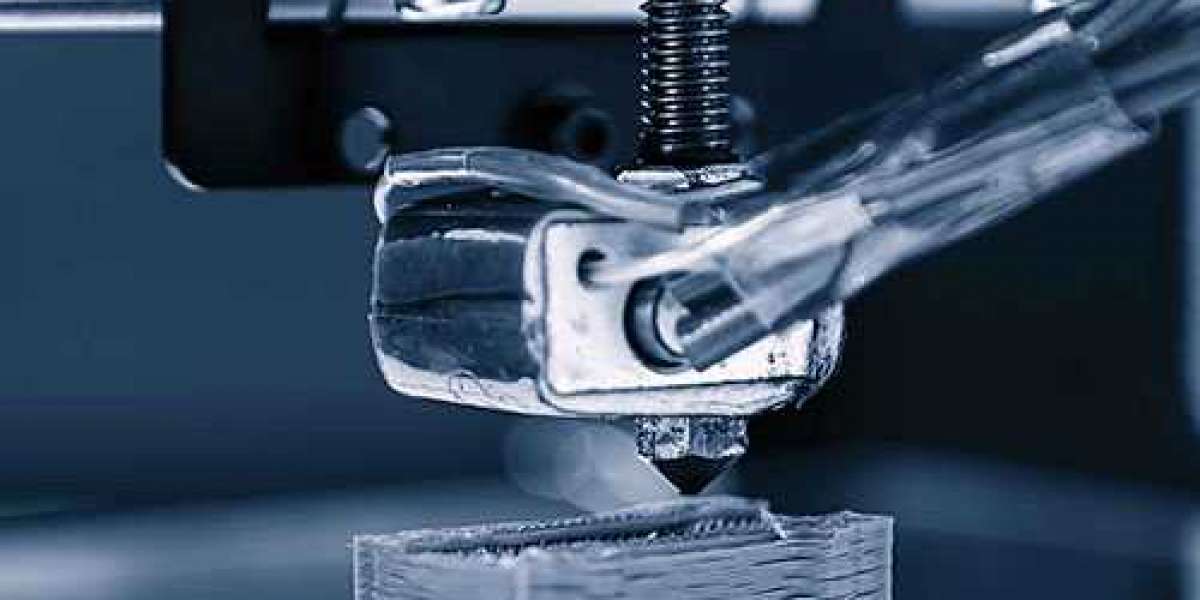Additive manufacturing (3D printing) has gone through more than 30 years since its early application. The most common process of industrial 3D printing is stacking and printing layer by layer on the powder bed, selectively sintering powder particles by electron laser beam, and finally forming.
3D printing poses two challenges to the long-standing dilemma of batch and range in manufacturing industry: first, it reduces the cost of large-scale printing objects. A printer can build multiple complex parts of different designs simultaneously, which makes the highly centralized factory production line useless (the threshold for entering the local manufacturing industry is reduced). Secondly, 3D printing increases the diversity of design under the condition of the same investment. Therefore, the cost of manufacturing complex parts, realizing production transformation and personalized customization can be reduced.
Compared with the large-scale manufacturing industry, the aerospace industry mainly focuses on complex small batch manufacturing. This industry is trying to make use of the latest and cutting-edge technology. At the same time, it is also one of the main markets of the 3D printing industry. It regards 3D printing as a way to overcome the main challenges, including environmental performance constraints, high manufacturing costs and highly competitive market environment.
How does the aerospace industry profit from additive manufacturing?
Optimize R D process
3D printing enables engineers to design prototypes faster and convert conceptual designs into entities. 3D printing eliminates the mold manufacturing process and directly produces the final product, thus accelerating the whole R D and production process. In this way, the company can quickly test a variety of design structures, determine customer preferences, reduce product return rate and shorten the time to market.
Similarly, additive manufacturing also has advantages in making models and small batch production, which can reduce or save expensive and lack of shared mold manufacturing costs.
3D printing can successfully realize crowdsourcing through remote cooperation. Over time, this model may affect the company's R D. Crowdsourcing will replace the traditional R D methods and become the primary choice of enterprises at some time in the future.
In 2013, DARPA applied to improve the vertical lift system of aircraft. Through 3D printing technology, Boeing produced the corresponding model in less than 30 days. Such a model, if made in other ways, can easily take months.
Complex component design
The traditional design will be limited by production technology to a great extent. In the past, engineers almost always considered the possibility and limitation of milling, rotation, casting, forging and welding process before design. Some topology optimization designs cannot be produced due to complex structure.
Additive manufacturing can produce plastic and metal complex parts, such as steel, aluminum and so on. In aerospace, 3D printed Ti-6Al-4V titanium alloy and 718 Inconel alloy have been used to make parts. These two materials have strong flexibility in geometric structure, providing a broader space for innovative design. At the same time, 3D printing also allows designers to ignore the limitations of traditional manufacturing and maximize product performance.
Ge aviation is also using additive manufacturing to produce turbine blades. These turbine blades have complex shapes and are conducive to reducing air flow resistance. Manufacturing these turbine blades in the traditional way will be quite laborious and time-consuming. Ge plans to achieve mass additive manufacturing of these turbine blades by 2016.

Design landing
Due to the characteristics of dealing with high design difficulty, additive manufacturing can convert complex parts into components, realize reduced production, and directly reduce the assembly time and cost. More importantly, it simplifies the change process of the final design model.
Theoretically, the implementation of a design by welding or other means will damage the quality and durability of the final product, so it is generally not inclined to combine multiple parts.
GE has manufactured integrated fuel nozzles, which are usually composed of more than 20 separate parts in the past. The 3D printing fuel nozzle used in Ge leap aero-engine has five times stronger durability than the fuel nozzle manufactured by traditional methods.
Spare parts production
With spare parts storage, people can repair aircraft at any time. General inventory includes small quantities of complex parts, discontinued aircraft parts or parts required for long-distance flight. However, the survey shows that many spare parts are often not used or abandoned.
Eliminating the trouble of storing these spare parts will mean an industrial innovation and a cost advantage for manufacturers. 3D printing reduces inventory and redundancy costs through on-demand real-time manufacturing or on-site manufacturing.
Such a flexible and agile production method will also greatly reduce the cost of space vehicles and space stations. With 3D printing, you can directly manufacture the required accessories and tools on the space station, and you no longer need to carry them into space by rocket, so there will be no delay and high cost.
With the permission of the European Space Safety Agency, British aerospace systems has used its 3D printed window vent pipe on local jetliners, saving 60% of the cost compared with the traditional injection molding process. Once there is a customer demand, these ventilation pipes can be printed in 3D and then transported directly to the customer.
Product lightweight
Weight is one of the important criteria considered by aerospace vehicles. Lighter weight means two aspects to the aerospace industry: first, it is conducive to reducing fuel consumption (and carbon dioxide emissions); Second, reduce costs and ticket prices, so as to highlight competitive advantages.
Space vehicles also need exquisitely designed components to reduce packaging space and weight. These complex parts are usually produced in small quantities, which is expensive and time-consuming to manufacture in the traditional way.
Laminated manufacturing technology (ALM) can help print objects with specific geometry, complementary structure and mesh structure, avoid material waste and reduce the weight of aviation components.
Eads uses direct metal laser sintering (DMLS) technology to 3D print the cab hinge bracket of Airbus A320. On the basis of ensuring the strength and performance of these components, they reduced their weight by 35% - 55%, and finally reduced the weight of the aircraft by 10kg.
3D printing Airbus A320 hinge bracket
For a aerospace company with 600 commercial aircraft, the weight reduction of each aircraft by 1kg means that a total of 90000 litres of fuel can be saved every year, greatly reducing fuel expenditure. According to 2013 statistics, fuel accounts for 35% of an airline's annual expenditure. In addition, each aircraft reduces the weight of 1kg and blocks the emission of 230 tons of carbon dioxide, which is also a figure worth mentioning for environmental protection.
Save material
Some aerospace components are made of very expensive materials, such as titanium alloy Ti-6Al-4V and Inconel 718. Traditional manufacturing methods are difficult to shape these raw materials. Depending on the geometry of the components, the production process may lead to a lot of material waste, waste of money and energy to recycle.
Although 3D printing of metal raw materials is expensive, it greatly reduces material waste. Lockheed Martin of the United States uses electron beam melting technology (EBM) to manufacture its exhaust leak proof detection equipment, so that its BTF ratio (buy to fly ratio, that is, the ratio of the amount of raw materials required to manufacture a part to the amount of materials contained in the final part) is reduced from 33:1 to 1:1. Although the use of 3D printed titanium alloy is more expensive than the traditional forging process, the cost of each exhaust leak proof detection part is reduced by half, and the mechanical performance is as good as that.
Synchronous quality inspection during manufacturing
The aerospace industry has strict requirements for product performance and reliability. The ideal metal additive manufacturing system should include real-time, closed and quality control in the manufacturing process.
Quality assurance is usually reflected in the downstream of the production process, which is very important for continuous production. Quality assurance is a key step in the delivery cycle of some parts. However, the quality control of this new process of additive manufacturing is a great challenge. Although it is difficult to detect complex shapes, it becomes more difficult when multiple parts are combined for printing, production and disassembly.
In the manufacturing process, the control system sets and processes process parameters to ensure ideal manufacturing conditions. The mechanical properties of additive manufacturing mainly point to metallurgy with high material and mechanical properties and high-quality components that can be rechecked. These characteristics are the basic requirements of aerospace industry.
In addition, the quality monitoring in the process reduces the quality inspection cost in the development life cycle management, which is conducive to ultimately reducing the unit cost. Ge aviation's follow-up quality inspection time accounts for 25% of the production time of jet engine parts made of additive materials. Synchronous quality inspection in the manufacturing process can accelerate the production cycle.
Expectation
Aerospace industry has now become the main source of demand for additive manufacturing. Aerospace leaders have recognized the unique advantages of this technology and made every effort to make use of it. Although it will take some time to develop into a mature strategic role in rapid aviation manufacturing, 3D printing technology and Aerospace will undoubtedly become a perfect combination in the future. In fact, there are still many difficulties to overcome to achieve this. At present, some key points mainly include printing accuracy, manufacturing platform capacity, material cost, material types and multi-material printing capacity.








